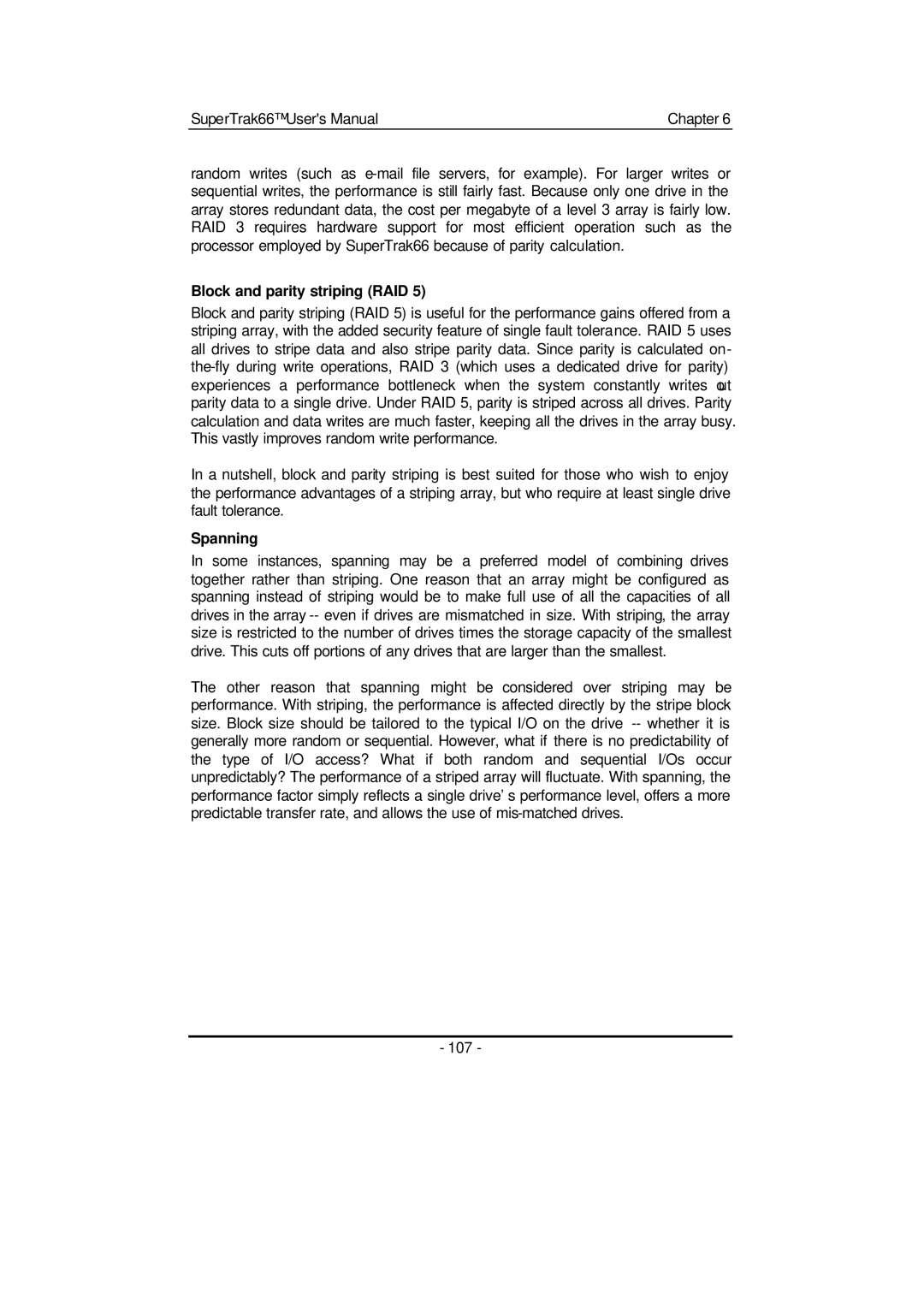SuperTrak66™ User's Manual | Chapter 6 |
random writes (such as
Block and parity striping (RAID 5)
Block and parity striping (RAID 5) is useful for the performance gains offered from a striping array, with the added security feature of single fault tolerance. RAID 5 uses all drives to stripe data and also stripe parity data. Since parity is calculated on-
In a nutshell, block and parity striping is best suited for those who wish to enjoy the performance advantages of a striping array, but who require at least single drive fault tolerance.
Spanning
In some instances, spanning may be a preferred model of combining drives together rather than striping. One reason that an array might be configured as spanning instead of striping would be to make full use of all the capacities of all drives in the array
The other reason that spanning might be considered over striping may be performance. With striping, the performance is affected directly by the stripe block size. Block size should be tailored to the typical I/O on the drive
- 107 -
